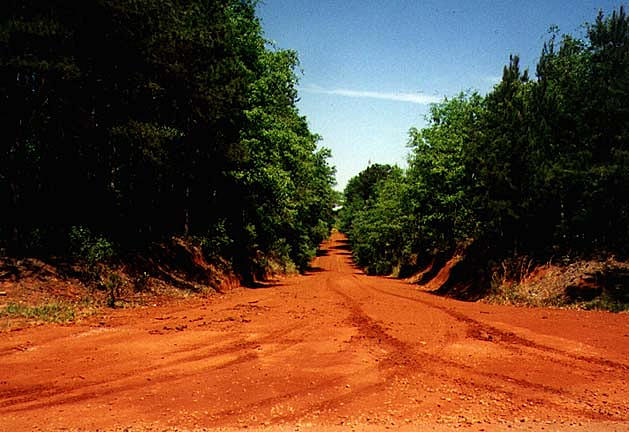GEORGIA RED CLAY, KNOW YOUR DIRT!

If you grew up in the Atlanta metro, you know all too well what that a pain it is to work with Georgia Red Clay. It's heavy, clumps together, stains your clothes, produces sub-optimal growth, and is generally a pain in the neck. But what is it? What are the most effective ways to landscape in this muck? How can you grow a row of stunning red nandinas in a bed of raunchy red clay?
Before we get to the specifics of working with the stuff, it's important to understand what we colloquially know as Georgia Red Clay actually is. For starters, it's not technically clay at all, but soil. It's not just any soil, but a specific class of soil called an Ultisol. Ultisols are known for their rich red color, high density, high acidity, and relatively low mineral content.
Now that you know a little bit about what the stuff is let's talk about how it affects your landscape. Ultisols are GREAT for building. Unlike some soils they don't swell or shrink based on water content. Plus they're stress tolerant, making excellent foundations for construction. You're probably thinking, "what's wrong with that?" Well from an architect's perspective, nothing, this is ideal! BUT from the home owners perspective it introduces a few issues.
Construction companies want to build a quality product that lasts. That means building on as stable a foundation as possible. In our part of the country, that means building on Georgia Red Clay. Establishing a lawn space that will look beautiful for years to come does not serve the interests of most home construction contractors. Their task is to build it, sell it, leave it. So in the process very little concern is put into soil health and sustainability. Often times construction companies will totally remove the healthy topsoil in a development in order to achieve the level stable platforms they need for construction without replacing it, only to throw down some cheap sod and a few simple plants when it comes time to put their product on the market.
All hope is not lost though! There are cost effective ways to significantly improve the health of your soil. Because Ultisols are so incredibly dense, aeration is a great place to start. If you can't afford to have it done professionally or to purchase a large machine, you can strap on some lawn aerator sandals for under $15 and spend an hour or so walking around. Once the soil is opened up it will be able to receive more nutrients from fertilization, absorb more water, and give seeds a greater chance of taking root.
Now that your soil is ready to receive all the love you can afford, it's a good time to do a soil test. You can have a soil test done professionally, but you can also easily and accurately measure everything you need to know about it with a home soil test kit. These kits range everywhere from $15- $500, but don't worry about breaking the bank on a high-end test. For the purposes of growing a plush green lawn, knowing your soil's pH levels and macro-nutrient content is plenty.
With very few micro-climate exceptions, Ultisols will have a low pH, meaning they are acidic. The ideal pH for your lawn is between 6 and 7. If you aren't there yet, a quick and easy fix to raise pH levels is the application of lime. Everyone knows lime is good for lawns, but it's important to know why and how much. More is not always better, as an over-application of lime can turn your lawn from slightly acidic to toxically basic in very short order, so apply with caution and test your lawn often!
If you've tried aeration, lime, fertilizers, re-seeding and voo-doo, but still just can't seem to get the results you want, the next step to consider is top-dressing your "red clay" soil. Top dressing is relatively cost effective when compared to hauling in multiple tons of topsoil. You can find top dressing mixtures at your local landscape supply retailer, or you can make it yourself by adding compost to sand. If you don't want to ante up the big money to cover your entire lawn and re-start your grass from scratch, you can disperse application over a period of months, allowing your grass to grow through the top-dressing and spreading out the expense.
Check out our other pages WEBSITE, HOMEADVISOR, THUMBTACK, FACEBOOK, TWITTER, YOUTUBE, GOOGLE+


No comments:
Post a Comment